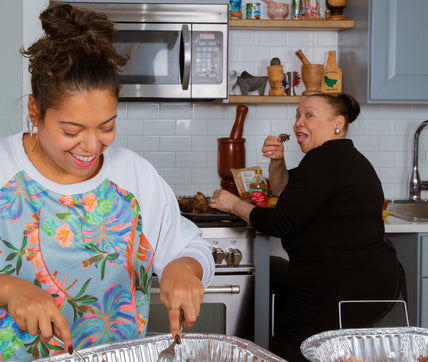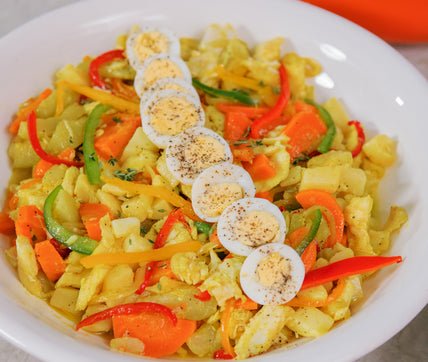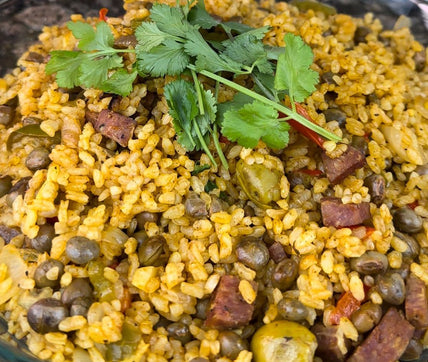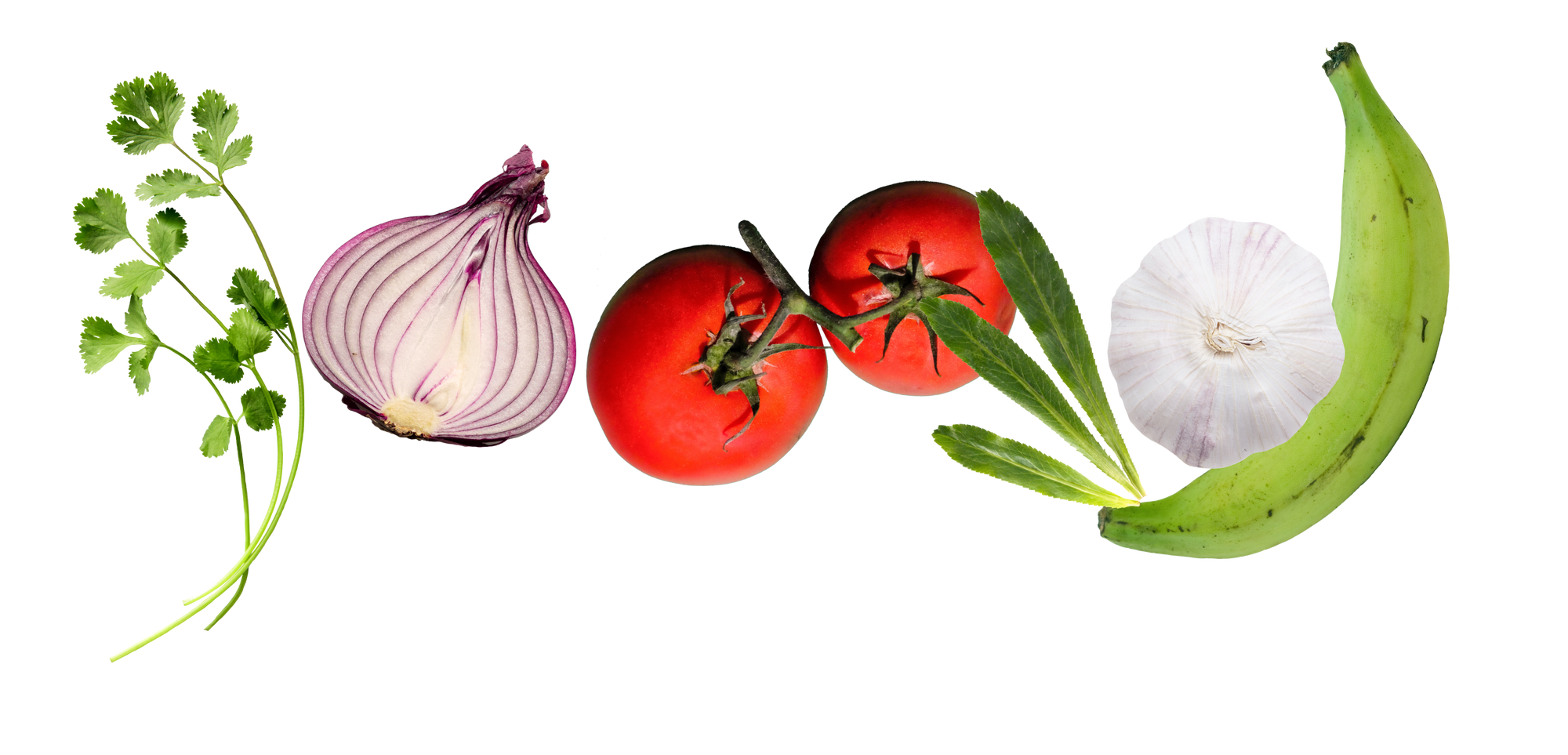
Calderos y Recuerdos: How Food Connects Familias
Gloria Malone explores how she connects to her ancestors and family in the Dominican Republic through food.
This Latin Heritage Month at Loisa, we’re thinking about all the ways we celebrate our culture and connect with our heritage through our wonderful dishes and ingredients. This beautiful essay, by Gloria Malone, explores how she connects to her ancestors and family in the Dominican Republic through food.
By Gloria Malone | @gloriamalone
I was born in the Dominican Republic but raised in the United States. I remember standing in the kitchen while my mother would cook for us and watch her make these dishes that reminded her of home. I don't remember my first home country as she does, but cooking helps me connect not only to my home country but my ancestors, named and unnamed, who contributed to me being me. Share how food and cooking help me connect to my birth country and family members who are still there.
Nothing beats the way that sofrito meeting hot oil in a caldero wakes up all of my senses. First, I hear the sofrito dance across the oil, immediately followed by the explosion of spices and herbs hitting my nose. My memory instantly recalls the flavors of spicy-sugary garlic, salt, bright green cilantro, and sweet onions make when combined as I salivate and imagine what the plated dish will look like before I devour it.

“Ven acá para que aprendas cómo cocinar rico como tu mamá” my mother would shout from the kitchen. It’s almost as if she knew all of my senses were being activated; and that I was interested in knowing more about what she was doing in the kitchen. As I watched and listened, I began to learn the importance of having your own practices, rhythm, and timing in the kitchen - and life - so that all the work you put into the meal comes out tasting as deep and rich as it really is.
Although I was born in the Dominican Republic, my family immigrated to the United States before I was two years old, which means I have no childhood memories from my birth country. Instead, I have the stories and recipes my mother and grandmother would share while cooking foods that reminded them of home. Recipes like the ever faithfully delicious fall-off-the-bone pollo guisado, bacalao con domplines, and perfectly fried tostones that compliment any meal – or, let’s be real, can be a meal all by themselves. All of these dishes meant something to them, and today they remind me of so many things. Pollo guisado reminds me of the first meal my mom let me cook all by myself. Bacalao con domplines reminds me of a trip I took to the Dominican Republic when I was young and having a bad day, so my tia made it for me. And tostones, well, they remind me that you can create heaven on earth. All you need is fire, oil, plàtano, and salt.

Being a curious and perpetually hungry child, I always had front-row seats to their stories and cooking. This seat allowed me to paint images in my mind about the places and people they’d describe. I’d imagine “la casa de mama” they would talk about and how the newest level was being built brick by brick by the person one of my tias had hired. Images of motoconchos - slightly beat-up dirt bikes - perfectly balancing entire families on their way to school would fill my brain as the smell of freshly chopped cilantro would fill my nose and their loud voices and sounds of wooden spoons tapping the side of the steel calderos would fill my ears.
A serving of beans was so much more than just beans, it was a generational practice of quality control, patience, and balancing flavors and consistencies. My mother’s mother had her pick out the rocks from the beans, just like my mother had me pick out the rocks and ‘bad beans’ from the bunch before it would all go into the pot to be softened. This small step helped to ensure everyone had a pleasant eating experience but made me feel like the biggest helper in the world. My mother explained that the beans take time to cook, so they usually get heated before all the other ingredients. They required time and patience to get the perfect ‘juguito de habichuelas.’
After we would pick, soften, season, and slowly cook the beans, my mom would give me some of this juguito over a bit of her perfect white rice out of the caldero before everything was done. It was our secret little treat. At the end of the cooking marathon, the beans, rice, and protein would be plated together, and everyone would have the privilege of tasting the culmination of the practices, rhythm, timing, and flavors my mother had perfected and invited me into learning.

When my grandmother would come back from Santo Domingo with recycled plastic jars wrapped in layers of tape and names written in perfect cursive on their bright red tops, I’d hear her tell stories about all of my tias, tio, and their children back home. I didn’t know their faces, but I knew which tia’s dulce de coco or dulce de lechosa was the best and the latest family gossip about each person. “Como ellos hacen el dulce tan bueno,” I’d ask between my rationed bites so that there was enough to go around. “Oh, mi hija, con paciencia y con las recetas de la familia!” they’d answer matter-of-factly. My curiosity was unsatisfied with this answer, but my heart and taste buds were too pleasantly distracted to push for a better one.
In these moments of enjoying delicious foods and juicy stories, distance and borders didn’t exist. When I was younger, my family and I were all connected through the commonality of food, stories, and laughter via strained phone lines that always required you to shout even when you thought you were speaking loud enough. Today, the only thing that’s changed is that we don’t have to shout via strained phone lines anymore, we just shout because we’re used to it.
As I’ve gotten older, I’ve realized that cooking, food, and stories are memories passed down and are simultaneously created from generation to generation. These ritualistic experiences of hot oil meeting flavors, pieces of love delivered in recycled tapped jars, and sneaky treats from the kitchen are all practices of reconnection. They invite ancestors and family members who can’t be with us into the room and our senses while we feed ourselves and our souls. These moments and memories remind us that no matter how far you go, home can always be a meal away.

About Gloria
An Afro Latina Content Creator and Communications Professional, Gloria Malone enjoys using culture, strategy, and storytelling to impact the media landscape. You can learn more about her on her website here!



